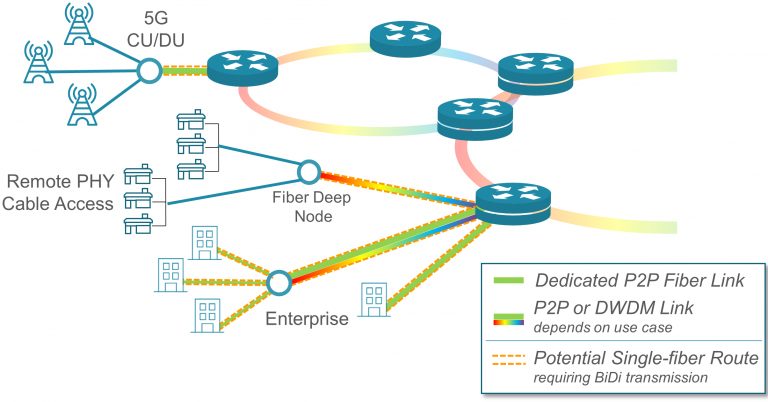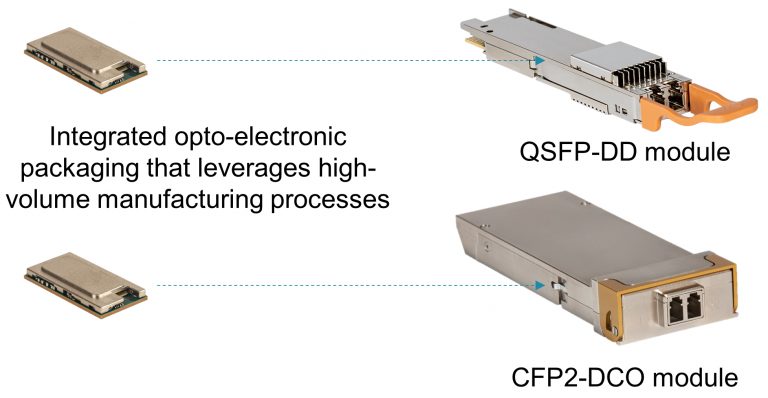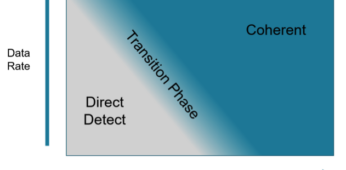Network evolution is driving new requirements that can be served by a range of coherent technology choices that can provide service providers with the path they need to meet growing bandwidth demands today and in the future. For example, evolving service provider edge and access networks are facing growing bandwidth demand because of new offerings such as streaming services for residential entertainment, uploading 4K-resolution videos into the cloud for social-network sharing and the increased use of two-way video chats and file sharing tied to work-from-home requirements. These applications and others are driving growing demand, especially when traffic from many end users is aggregated. As a result, the wired and wireless network infrastructure being deployed to support aggregated residential customer traffic and enterprise business services is driving bandwidth capacity higher than legacy infrastructure can support based on traditional optical transmission technology.
Coherent pluggables have emerged as an effective way of meeting this challenge through recent advancements in silicon photonics, opto-electronic integration, and CMOS nodes with lower power consumption. By leveraging coherent solutions, network operators can overcome the many challenges they face today when trying to scale to higher data rates in a cost effective and operationally simplistic way.
Network operators should consider the following link design challenges, benefits, and form factors when preparing to use coherent pluggables.
Accommodating Different Link Designs
Edge and access networks consist of many different links such as dedicated point-to-point (P2P) fiber links, higher-capacity dense wave-division-multiplexed (DWDM) links, or fiber-constrained routes requiring single-fiber bidirectional (BiDi) P2P or DWDM links. The below image shows examples of different connectivity solutions in the service provider edge/access portion of the network.

Coherent Technology for Edge and Access
Unlike capacity and reach limitations of direct-detect solutions for service provider edge and access links, coherent technology can easily bridge the gap to higher bandwidth and longer distances on any deployed fiber type. Coherent also provides an operationally simple solution, which played an important role in driving its adoption in longer-reach environments. Key benefits include:
- Coherent transmission tolerance
- Monitoring, diagnostics, and troubleshooting
- Reliability
- Scaling to higher data rates (100G and above)
Module Form Factors for Edge and Access
Acacia offers a range of modules in QSFP-DD and CFP2 form factors to address different network applications for cable, 5G wireless X-haul and enterprise services such as single-transmission P2P links, DWDM links, and single-fiber BiDi links.

All these solutions leverage Acacia’s 3D Siliconization approach, which utilizes high-volume manufacturing processes and benefits from the maturity of Acacia’s silicon photonics technology. With these solutions, Acacia has leveraged its 10 years of high-performance coherent transmission expertise to specifically address edge and access applications in terms of form factor, power consumption and cost.
Want to Learn More?
Read the white paper “Coherent for Service Provider Edge and Access Network Applications.”
Sign up for this upcoming Omdia webinar titled “Pluggable coherent modems: The future is here” that will help you understand the use cases and applications for coherent pluggable modems as well as gain insights for net


